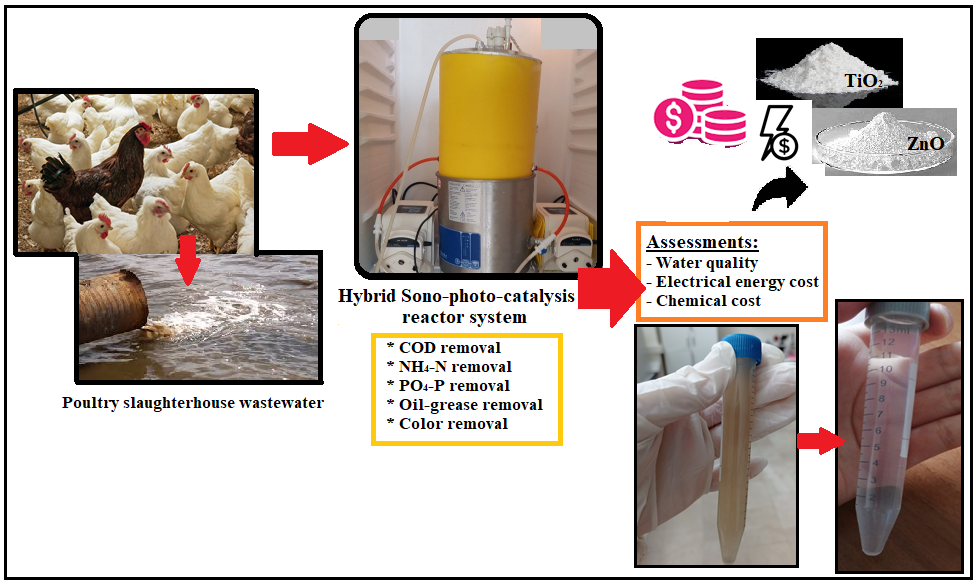
Poultry slaughterhouse wastewater (PSWW) is a crucial concern fundamentally due to extensive generation and related substantial amounts of recalcitrant organic content due to high COD and oil and grease (O&G) levels. Hybrid advanced oxidation processes are promising, green, and innovative options to treat various industrial wastewater; to date, this potential has not been implemented to high-strength wastewater from the poultry industry. This work aims to investigate the combination of ultrasound and photocatalysis processes in the treatment of poultry slaughterhouse wastewater for the removal of COD and O&G under different operating conditions such as catalyst type (TiO2 and ZnO), irradiation type (UVA365 and UVC254), catalyst dosage (0.5-2.5 g/L), pH (2–10), hydrogen peroxide concentration (0-10 mM) and operation time (30-180 min). Taguchi’s experimental design based on the L36 orthogonal array was adequately applied to optimize the process. The finding results presented that ZnO concentration of 2.5 g/L, pH 2, and operation time of 180 min under UVC254 were optimum parameters to achieve maximum COD removal while, ZnO concentration of 1.5 g/L, pH 6, H2O2 concentration of 5 mmol/L and operation time of 30 min under UVC254 were optimum parameters to achieve maximum oil and grease removal. With these optimum conditions, the best attained COD and O&G removal yields were 54% and 99%, respectively.
Total file downloads: 8